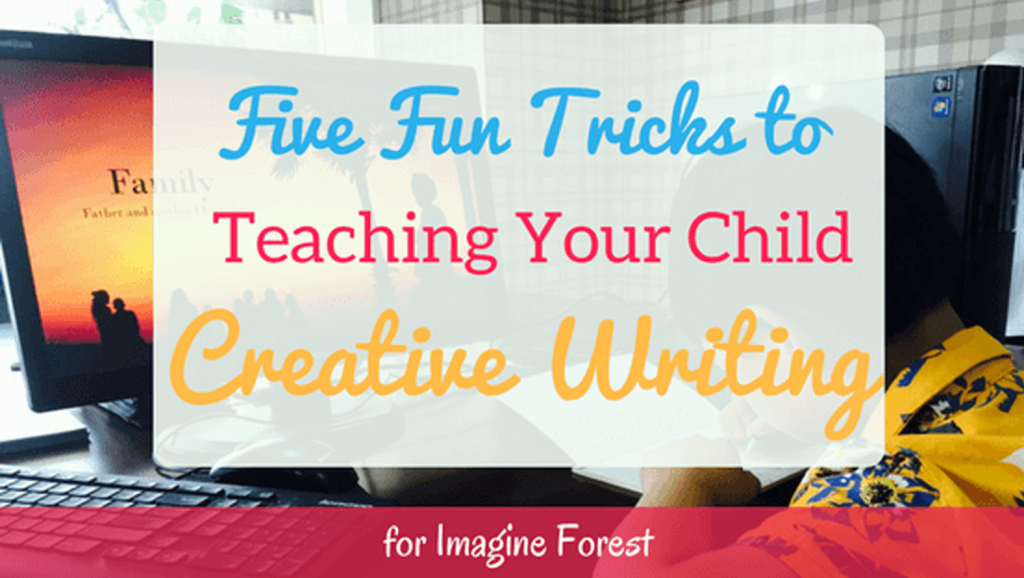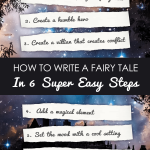5 Fun Tricks for Teaching Your Child Creative Writing
Whether your child is just learning to read or in middle school, it’s never too early or too late to help them become a more creative writer. While some children naturally excel at writing, many need some guidance in this skill. Here are some fun ways to teaching your child creative writing and helping them become a better creative writer.
Read Often
The more you read to your child, the more words and storylines they will absorb. Hearing and seeing as many words as possible will help them form the ability to create their own sentences and stories. If your child is young and cannot read on their own, you should:
- Read a variety of books with them.
- Ask them simple questions about the story like how the characters are related or what they are doing.
- Allow your child to choose books they want to read and ask them about their choices.
- Start all of this when your kids are young. If you’re out and about a lot, get a reversible stroller so you can face them and easily read with/to your kids.
If your child is old enough to read:
- Encourage them to read out loud with you.
- Encourage them to read a variety of books, but also allow them to choose books they enjoy. You can even check out our selection of reading lists to get you started.
- Set aside time for them to read with your or alone every day
- Ask them more complex questions about the stories like what the characters’ motives are or why they may be good or bad
Practice Storytelling
Creative writers are good storytellers. Foster storytelling in your children by encouraging them to make up stories. For younger children, you can:
- Ask them to tell you a story by helping them come up with one or two main characters
- Encourage them to tell you about the characters by asking them questions about what they are going to do or what problem they will solve
- Help them figure out how the characters will perform the task or solve the problem
- Write their story down and read it back to them
For older children, you can:
- Help them come up with a plotline, or give them a prompt to start with
- Find some different images from the Internet or magazines that you can use as prompts
- Start by drawing some pictures with them and create a story from those pictures
- Have them write their story down or take turns writing the story with them
- Ask them questions about their story, so they can work on streamlining it in a way that makes sense
Looking for story prompts? Check out these cool writing prompts.
You can also foster storytelling by continually asking questions about the world around you. When you’re out and about, you can ask your child where you think different people are going, shopping for, or planning to do next. If you see an animal, ask them what they think the animal is up to or what their life is like. After you get home from the park or another fun place, have them tell you about what they did and what their favourite part was.
When working with your child on storytelling, do not worry about grammar. Focus on helping them grow in their creativity and ability to think about the story. You can work on grammar another time like when they’re learning about it in school.
If you are interested in further information on how to bring out your child’s inner storyteller skills, check out these 10 storytelling activities for kids.
Act it Out
Playwriting can help your child become a more creative writer because it helps them focus on piecing a plot together in a sensible way. Work with them on putting together a short play. You can invite friends or siblings to play the characters. The play does not need to be long or have many characters. Once you’ve taken a little time to write up a plot, you can:
- Grab some props and costumes for your actors
- Make a little “stage” – it can just be a large space, or it can be something more formal like a platform
- Have your children act out the parts
- Allow your child to re-write scenes (or aid them in re-writing) as they recognize plot holes or parts that don’t make sense
Paper finger puppets can be a great way to role-play difference scenes and improve your child’s narrative skills. Sign up to the Imagine Forest newsletter for free monthly finger puppet printables to your inbox.
Create Fun Projects
If your child doesn’t enjoy coming up with stories or is not as imaginative, come up with some more concrete writing projects. These projects should have a set goal but allow for some creativity. They can serve as a stepping stone for helping your child write more creatively. Some examples include:
- Writing a letter for your holiday greeting cards, updating your friends and family on what you’ve been doing throughout the year. These DIY animal envelopes and letter writing prompts can be a great idea for kids.
- Writing invitations and thank you notes for parties.
- Creating a dinner menu for guests who come over.
- Writing an article for a local or neighbourhood newsletter.
- Writing emails as correspondence to family and friends.
- Setting your child up with a pen pal for letter writing.
Play Games
The more words your child learns, the more they will have to work with when writing. Knowing more words and how they can be used will help them grow their ability to write creatively. You can play fun word games with your child to expand their vocabulary and overall thinking. Some popular ones include:
- Scrabble
- Mad Libs
- Taboo
- Catchphrase
And don’t forget video games can be also great for improving literacy skills. Just remember to moderate your child’s time so they don’t spend too much time playing video games.
Any tips for teaching your child creative writing?
The most important part of teaching your child creative writing is to be a source of encouragement. Allow your child the freedom to be as creative as they want when coming up with a story, and try not to reject their ideas. Focus instead on asking a lot of questions and expanding their vocabulary. As they grow more confident and skilled, they will be able to better share their ideas and edit their own writing. Do you have any more writing tips for teaching your child creative writing? Let us know in the comments below.





Comments loading...